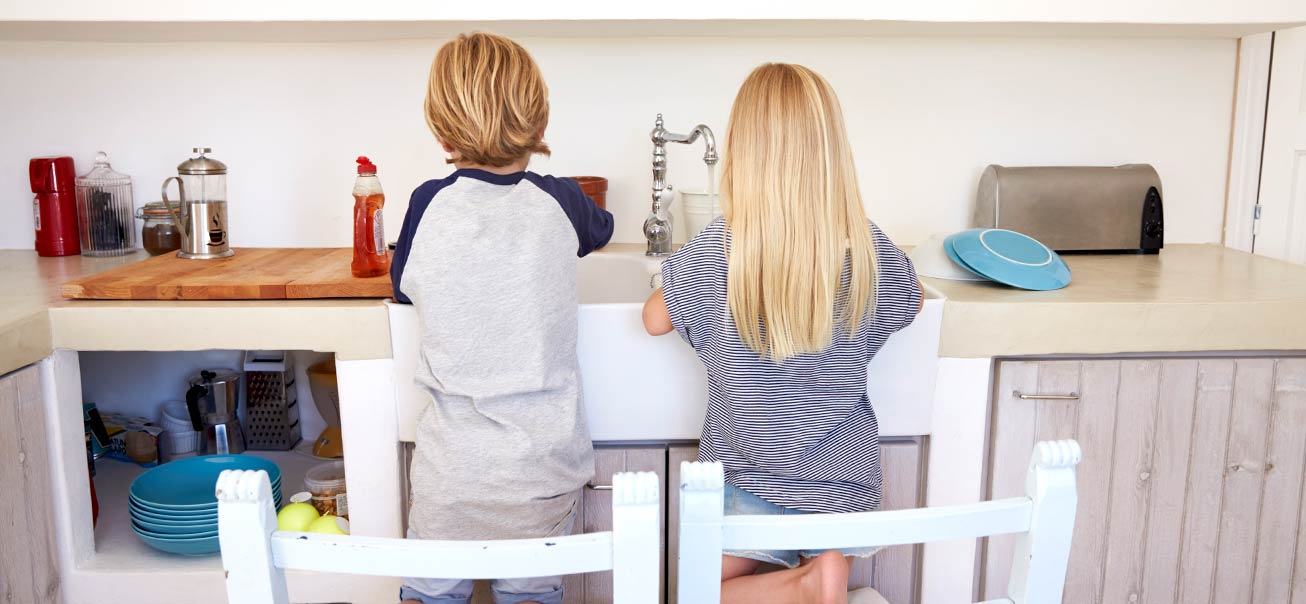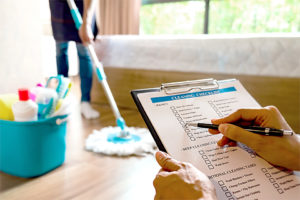
Divide and Conquer Household Chores
Doing chores is a tradition in many families. Chores help kids learn responsibility, and sharing chores gives you help around the house.
Not sure your kids will go for it? Take heart! There are ways to make chores a little bit, well, less of a chore for everyone.
That may all sound fine, but how do you get your kids on board?
Why a Clean Room is Important
The best way for your kids to keep their room clean is to teach them the values of keeping a clean room while they’re young. Clothes and toys that are scattered around the floor can be trampled and ruined, or easily carried off by the family dog. Starting young will also create healthy routines and your child will know what is expected of them.
With a little effort and endurance, in the beginning, you set your child up to be a valuable helper and somewhat self-sufficient not only in cleaning their bedroom but for later household tasks. No child will be perfect, but if you don’t start when they are young, you will be nagged and picking up after them until they move out…..if they move out.
Need help keeping your home clean and neat? Our maid service team can help! Contact us today!
Before You Start
Do yourself and your child a huge favor. It is always easier for a child to “keep” their room clean if it is organized and clean, to begin with. If your child’s bedroom looks like a disaster area then your child may not have a clear idea of what “clean” looks like…and children are visual.
Start off by making sure there’s actually a place for everything in the room, to begin with. Children, as well as adults, get overwhelmed with clutter. Start with one area at a time and plan together as much as possible for their age. Let your child help make decisions that are less crucial.
Don’t be stingy with praise.
Get that praise going right away! Don’t wait until the chore is done. Praise and encourage the child while the chore is in progress. You want to build positive momentum, especially with young kids.
>Make Cleaning Fun
Make Cleaning Your child’s room a Game
I often “played” the sock matching game with my son. This is a great way to get children used to putting things in their drawers after the game is over as well as teaching matching skills. First, we would sort the big socks from the little socks, and then we would match them. You can see who gets done first or do it together as a “team”. You may have to fold them after they are paired up and then your child can place them in his or her drawer.
Baskets are Easy, Boxes are Fun
You ever noticed how a child will play with a box for hours and leave the expensive toy that was inside just laying on the floor? That’s because boxes are fun and can turn into anything your child can imagine. A child sees a box as a car or a hiding place (depending on how large the box is).
If you can get the box before it’s been damaged from the kids playing with it – it can be used in the closet where items can be placed that are no longer used, clothes that are too small, books, etc.
You could call this the sharing box and when the box is full, it can be donated to the thrift center, women’s shelter, or charity. This will help teach your child the joy of giving to another child who may not be as fortunate as them. Your box can be decorated with pictures of cars, animals, or whatever makes your child happy!
Baskets are perfect for keeping rooms clean and can be used under-the-bed, in the closet, or on the top of the dresser. Baskets can also be color-coded to help your kids put their toys where they belong.
Make a Chores Chart
“Create a list of every job it takes to keep a family going.” Have kids pick out the chores they’d most like to do. Then create a chart.
First, check that everyone has an age-appropriate chore. Then divide the chart into three columns. One is for the list of chores and whose chore it is; another is for deadlines; the last one is for making a checkmark when the chore is done. Put the chart where everyone can see it and let everyone follow through on their own assignments.
You might actually find it easiest to have two charts: one for daily household chores and one for weekly household chores.
Here are two more tips:
Be specific with instructions. Pantley says, “‘Clean your room’ is vague and can be interpreted in any number of ways. Instead, be explicit by saying, ‘Put your clothes in the closet, books on the shelf, dishes in the kitchen, and toys in the toy box.'”
Ease into chores for children. First, show them how to do the chore step by step. Next, let your child help you do it. Then have your child do the chore as you supervise. Once your child has it mastered, she’s ready to go solo.
Go easy with reminders and deadlines. You want the chore to get done without you micromanaging it. Pantley recommends the “when/then” technique. For example, say, “When the pets are fed, then you may have your dinner.”
Reaping the Reward: Your Child’s Pride and Responsibility
Teaching your child to clean their room is sometimes hard work. Especially if they are older and you’ve picked up after them thinking that you would wait until they are older. You should focus on the benefits as you are going through the learning process:
• Having children clean their own room is a good way to teach responsibility and gives a child a sense of pride and accomplishment.
• Making a habit of keeping a room clean also goes a long way when children grow up and have a home of their own to keep clean.
• The best part is that after it becomes a habit for your child….you’re job just got easier!




